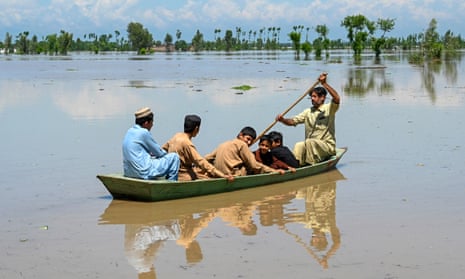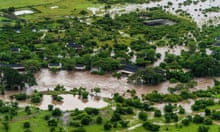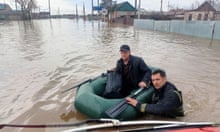Heavy rain has fallen in Afghanistan and Pakistan over the past week, with flooding causing widespread damage to infrastructure and farmland on both sides of the border.
At least 135 people have been reported dead, including 21 farmers in the Punjab region who were struck by lightning while harvesting wheat. Thousands of houses have been damaged or destroyed, with several deaths attributed to roofs collapsing under the weight of collected water. Alongside damage to almost 100,000 acres of agricultural land, thousands of livestock animals have been lost.
The extreme rainfall came in stark contrast to the uncommonly dry winter, during which Afghanistan received only about half its usual rainfall, while Pakistan fared little better. The resulting drier soils struggled to absorb the rain, which exacerbated the flooding.
Such excessive rain is unusual for Pakistan outside the monsoon season, which typically runs from June to September. The worst-affected province, Balochistan, has so far this month received more than three times its average April rainfall, while Pakistan as a whole has received almost double.
Rain on Wednesday was brought by the remnants of a system of severe thunderstorms that had previously affected the United Arab Emirates and Oman on Monday and Tuesday. More than 200mm fell in northern parts of both countries, causing widespread flash flooding and at least 21 deaths. The storms also passed over south-east Iran later on Tuesday, delivering more than 100mm in places, with flash flooding washing away homes and rail lines.
Though countries in the Persian Gulf typically receive their annual rainfall over a small number of days, this event was particularly intense, with Dubai surpassing its annual average after just 12 hours. The UAE as a whole recorded its highest 24-hour rainfall since records began in 1949, with the greatest local total 256mm in the city of Al Ain.
While some of the storms affecting Pakistan have also strayed into northern India, parts of central and southern India are experiencing heatwave conditions. Many areas have seen temperatures peak in the low 40Cs since Monday, at a time of year when daily maximum temperatures in the region are typically in the mid-to-high 30Cs, and this trend is set to continue.
The eastern states of Odisha and West Bengal will see the highest temperatures over the next few days, possibly reaching the mid-to-high 40Cs, which could result in maximum temperature records for April.










